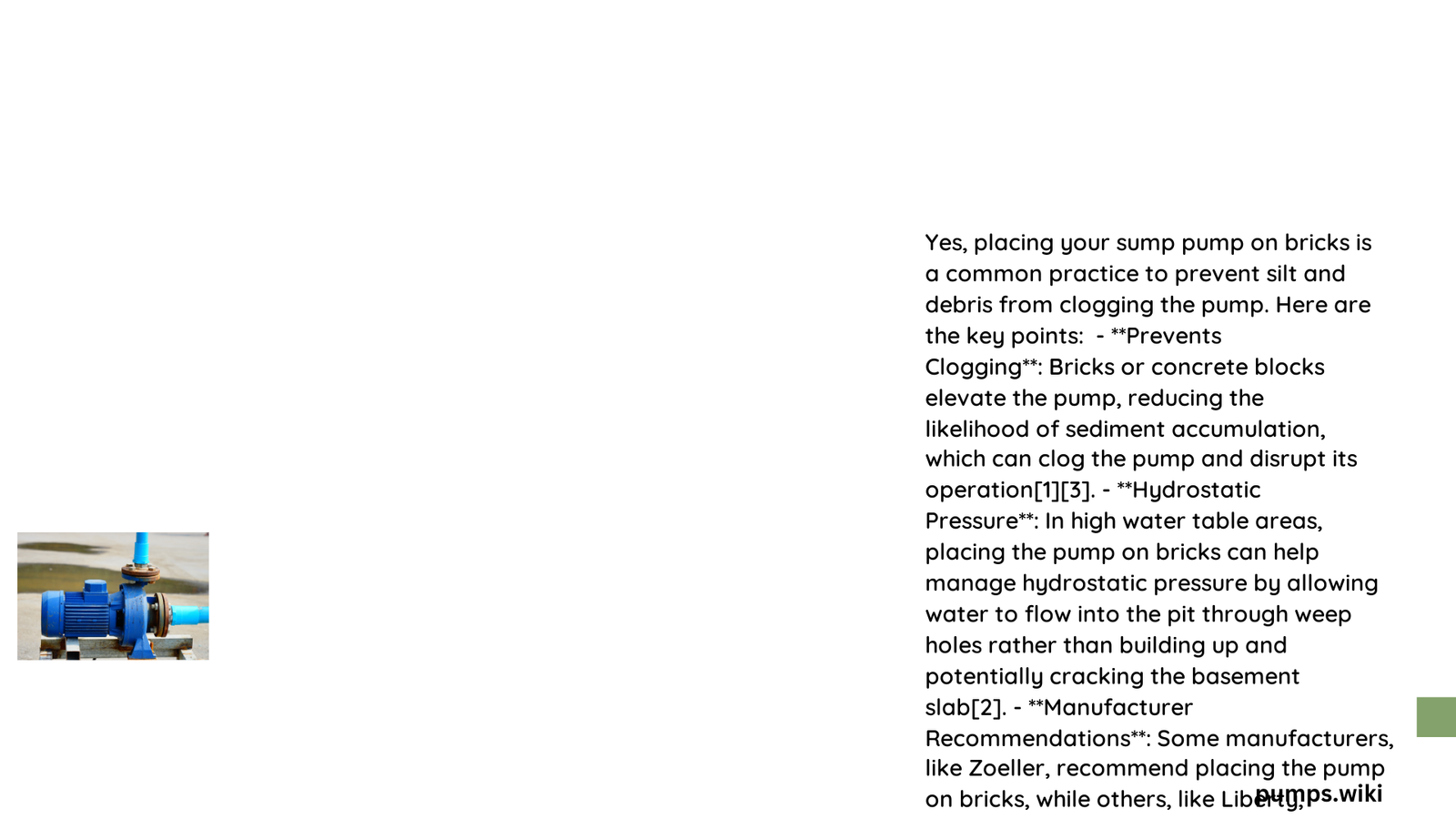Homeowners often wonder about the best practices for sump pump installation, specifically whether elevating the device on bricks is beneficial. Proper placement can significantly impact your sump pump’s performance, longevity, and efficiency in managing basement water levels. Understanding the nuanced approach to sump pump positioning involves considering factors like debris prevention, moisture control, and overall system reliability.
Why Should You Consider Elevating a Sump Pump?
Elevating a sump pump is not just a random suggestion but a strategic decision with multiple benefits. Here’s a comprehensive breakdown of why you might want to place your sump pump on bricks:
What Happens When You Elevate the Sump Pump?
- Debris Prevention
- Reduces sediment intake
- Minimizes potential pump clogging
-
Extends pump’s operational lifespan
-
Improved Water Management
- Creates optimal water level control
- Prevents excessive standing water
- Enhances overall drainage efficiency
How High Should the Sump Pump Be Elevated?
| Elevation Height | Recommended Approach | Benefits |
|---|---|---|
| 1-3 inches | Use concrete pavers or solid bricks | Prevents sediment intake, maintains proper water level |
| Less than 1 inch | Not recommended | Increases risk of debris accumulation |
| More than 3 inches | Potentially destabilizes pump | Reduces pump efficiency |
What Materials Work Best for Sump Pump Elevation?

When selecting materials to elevate your sump pump, consider these options:
- Concrete Pavers:
- Durable and flat surface
- Provides stable foundation
-
Resistant to moisture
-
Solid Ceramic Bricks:
- Uniform thickness
- Good weight distribution
-
Minimal water absorption
-
Granite Stones:
- Extremely durable
- Smooth surface
- Long-lasting elevation solution
What Potential Challenges Might You Encounter?
While elevating a sump pump offers numerous advantages, be aware of potential challenges:
- Stability Concerns
- Ensure bricks are level
- Check pump alignment periodically
-
Prevent uneven weight distribution
-
Maintenance Requirements
- Regular inspection of elevation platform
- Clean surrounding area
- Monitor for any structural changes
How Do Professionals Recommend Sump Pump Placement?
Professional plumbers and waterproofing experts generally suggest:
– Elevate pump 1-3 inches above pit bottom
– Use solid, flat materials
– Ensure complete pump stability
– Maintain clear surrounding area
What Are the Cost Implications?
The investment in elevating your sump pump is minimal compared to potential water damage:
– Brick/paver cost: $2-$10
– Potential damage prevention: Thousands of dollars
– Increased pump longevity: 2-5 additional years of service
When Should You Seek Professional Help?
Consider consulting a professional if:
– Your basement has complex water management needs
– You’re unsure about proper installation
– Existing setup shows signs of inefficiency
Final Recommendations
- Always prioritize pump stability
- Use high-quality, moisture-resistant materials
- Perform regular maintenance
- Monitor water levels and pump performance
